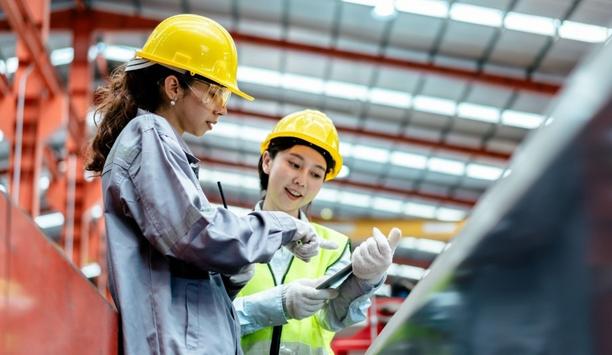Security solutions should be about integration not isolation. Many organisations are considering their existing processes and systems and looking at how to leverage further value. Security is part of that focus and is a central component in the move towards a more integrated approach, which results in significant benefits. Gert Rohrmann, Technical Manager for the solutions division of Siemens Building Technologies UK, examines how by drawing data from a number of different sources and subsystems, including building automation, it is possible to move towards a truly smart environment.
For larger systems that can leverage existing IT network infrastructures, integration is an important factor. It makes sense to move away from a single discipline approach to one that views security in a more holistic way. This applies not only to the integration of different security functions, but also how security and safety can be integrated into general business processes. The market has moved significantly in connectivity terms, particularly with the development of open architecture.
New physical access control standards
Originally driven by the network video sector, the focus for the security industry has switched to the adoption and development of new physical access control standards with a push to build compliant devices. Open architecture continues to develop around the BACnet protocol, particularly in the building management systems environment, with a further drive towards standard protocols in the security arena led by industry forums such as ONVIF (Open Network Video Interface Forum) and PSIA (Physical Security Interoperability Alliance). Supporting customers to move away from proprietary communication protocols, providing software through cross-domain management and command and control solutions will become an increasing focus as the trend towards integration and standard IT solutions accelerates. Operational teams require intelligent and integrated management tools as the business environment becomes more complex.
The focus for the security industry |
Enterprise Resource Planning software
Smart cards have the potential to enhance workplace security through the inclusion of authentication for accessing the IT network and applications, digital signature and email encryption, biometric data, printer access management and other ‘bolt on’ functionalities such as cashless vending. Increasingly, standardised and certified interfaces are being established with Enterprise Resource Planning software systems such as SAP and Human Resources, as well as facilities management. This ability to interface with data sources enables an automated process for identity management, including automatic assignment of access entitlements based on the individual’s role and responsibilities. The operational cost savings, increased data consistency and security that can be achieved is significant.
Enhanced energy efficiency
An important area of integration is to enhance energy efficiency and subsequent cost savings. Security has a vital role to play in this process as the security systems provide the information relating to the occupancy of a building. At its simplest, if the alarm detection or access control system knows that no-one is present in a given room, the heating, ventilating, lighting and air conditioning systems can be automatically adjusted to reflect the situation.
 |
| It is also possible to set building conditions based on the person that has entered |
Furthermore, it is also possible to set the conditions based on the person that has entered a building, as the access control reader will know the identity of that individual and their role. An example would be lowering the temperature for cleaning staff, whose role is more physically active than that of an office worker carrying out more sedentary tasks for a longer period of the day.
Intrusion and emergency management
Another benefit of integrating security and building management systems is the ability to handle an emergency incident. In the event of an intrusion, the appropriate lighting and surveillance video cameras can be activated automatically, or in response to an emergency evacuation, wayfinding instructions can be set in motion to ensure safe exit.
Enhancing fire protection
Obtaining a return on investment is an important factor in implementing integrated management systems and capitalising on synergies between core subsystems - such as security and fire safety protection, power, communications and building energy management – makes it possible to minimise or remove system overlaps, thereby saving money and improving manpower allocation.
It is common for security and fire safety systems to operate independently; however, deep integration across security and fire technologies will not only offer higher levels of performance from these areas, but also create a fully automated approach to task handling and incident management by extending cause and effect to include security within life safety systems.
Deeper integration will enable |
We are familiar with security subsystems such as CCTV, alarms, access control and perimeter protection working together to protect assets and restrict entry to specific areas; however, fire safety systems such as fire detection and clean extinguishing still usually work in isolation. Deeper integration will enable identification and analysis of unusual behaviour and facilitate more proactive decisions.
By combining a wide variety of systems and creating a logical sequence, it is possible to limit potential damage. For example, in the event of fire, a workflow-oriented approach driven by security and safety devices would maximise protection across the site, as video surveillance cameras would verify the situation, ventilation systems would adjust to prevent smoke from spreading, escape routes would be activated and live messaging would alert relevant personnel and facilitate safe, orderly evacuation. The integration of these multiple technologies would enable a complete incident record to be collated and communication with the access control system would create an instant roll call of people on site.
Fully integrated security installation
Siemens has installed a fully integrated fire, security and energy management solution at Sabiha Gökçen International Airport in Turkey. This intelligent solution has been designed to deliver first-rate protection and maximum energy efficiency for the airport’s passengers, staff and assets and the general public.
 |
| The operator can view displays of alarms, messages and the status of all connected systems |
The safety and security system required the installation of 200 video surveillance cameras and 28 digital recorders, and 9,000 Sinteso fire detectors combined with 400 carbon monoxide gas detectors, all fully integrated to provide maximum levels of protection. The operator can view displays of alarms, messages and the status of all connected systems and the modular architecture makes it both cost-effective and scalable. In the event of evacuation, an integrated voice notification system using 4,600 loudspeakers will be activated automatically.
Total Integrated Power system
To further enhance safety, a Total Integrated Power system enables power distribution from the medium voltage supply right through to the socket outlet, providing maximum control and improved protection, helping to detect any irregularities in the energy distribution system to prevent the possibility of a fire or power failure.
The solution has the flexibility |
Cost and energy efficient systems
The Siemens Desigo building automation system measures 11,000 data points and reacts by raising blinds, turning off lights and reducing or increasing heating and air conditioning, thereby saving energy and ensuring a comfortable environment inside the terminal.
The integration of security, fire safety and energy management means that all the disciplines are fully coordinated to ensure that the airport buildings are safer, more comfortable, more efficient and economical. The solution has the flexibility to adapt to changes in usage and requirements and can be expanded at any time in the future, thus maximising the value of the original investment.
Integrated and automated security management
At a corporate level, successful integration contributes to the delivery of strategic and operational objectives and on a day-to-day level, provides a safe and efficient working environment, which is essential to the performance of any organisation. Businesses are increasingly demanding technology that will assess and manage critical situations, distribute information and co-ordinate and manage resources. It is common for building systems to operate independently; however, deeper integration of building management with security technology will not only offer higher levels of performance and greater energy efficiencies, but also create a fully automated approach to task handling and incident management.






















